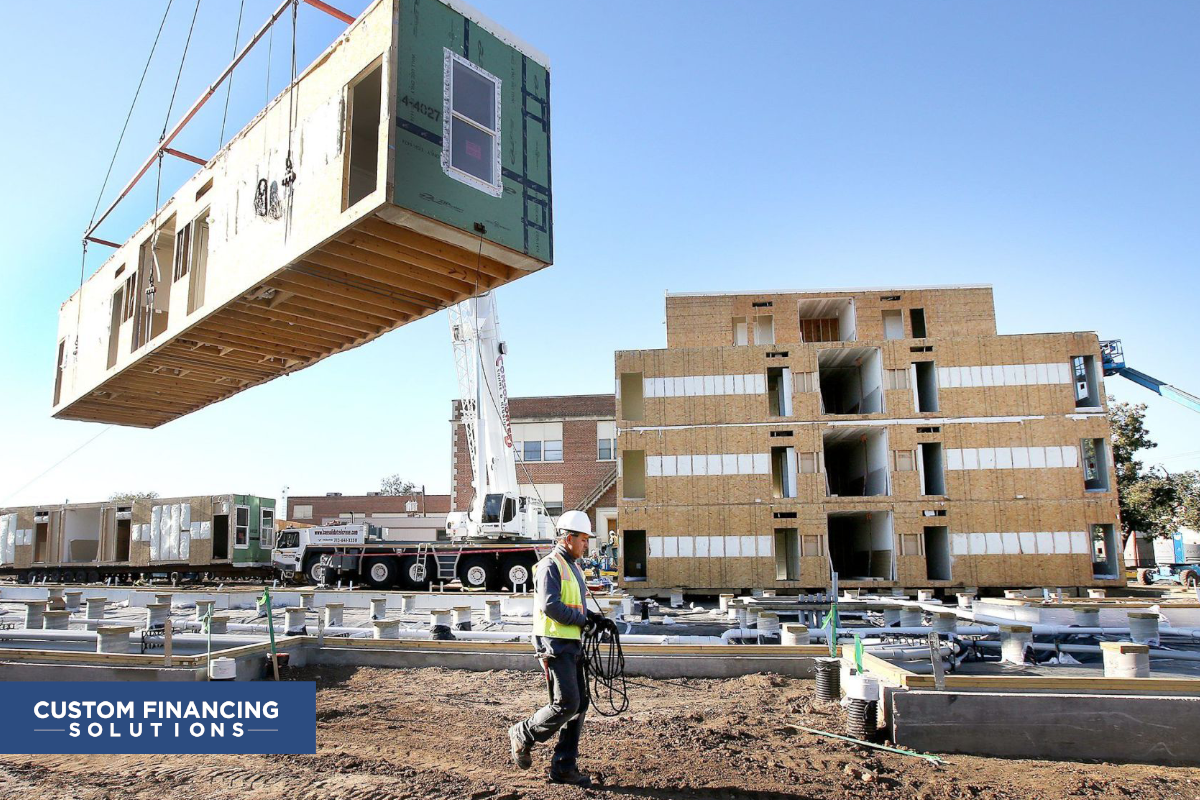Every industry grows at a pace. This ensures continuity and constant innovation. The construction industry has also seen its fair share of changes and it continues to grow. Pioneers help in methods that resolve problems in the system, coming up with new ways to complete the work faster or more efficiently.
Modular Construction is gaining popularity within the community due to its advantages over the standard method of building.
What Is Modular Construction?
Modular construction involves manufacturing ‘modules’ which are single sections of the project. They are then put together at the site to get the final product.
The modules are made in a separate space with quality checks.

Modules
Modules can be understood by imagining building blocks. Just as they perfectly fit in the other to complete a building, so do the modules.
They are made in a factory in a controlled environment and go through rigorous quality checks. Each module is around 12-14 feet in width and 30-72 feet in length. The size of the modules varies depending on the project. This helps in easily transporting the modules to the worksite via the road.
The Process
The start of the process while taking this method is the same as any other construction project. You start planning your project. Making a blueprint, contacting and hiring the necessary people, and working on a good quality plan.
Where it differs is the execution of that plan. In the case of the traditional style, all the construction work is done on the site of the project. The project rises, brick by brick and floor by floor right there. However, with modular construction, the development of the building splits into two parts.
On-site: The site is prepared for the building. Excavation starts as scheduled after breaking the ground. The foundation is then laid into the ground for the building.
Off-site: Simultaneously, the modules are manufactured in a factory. These modules are made to fit into each other seamlessly.
The modules are then transported to the site. Assembly is done by cranes in a planned order. With the last piece fitted in, the building will be ready for final fittings.
Advantages
Time: One of the major advantages of a modular construction schedule is a huge saving in time. Due to the construction work happening both on and off the site, the project time can be cut by a whopping 30%-50%!
This also happens because as soon as the modules reach for assembly, 95% of the construction work is said to be finished.
Strength: Every single module is tested to withstand wear and tear. When assembled and sealed together, they reflect that strength throughout the project.
Low Wastage: The modules are made very carefully, keeping quality, strength, and good use of materials as priorities. These avoid the normal wastage that happens when the work is completed in one place only.
A good modular building with proper maintenance can go on for many years. Your team must be trained to work as a unit to complete this type of project with speed and accuracy. They will also learn a new skill. Reasons like these are why direct employment gains ground over subcontracting.
Here at CustomFin, we help you learn new ways to stay ahead of your competitors. Additionally, we partner with other contractors to provide financing to their clients.








[…] at CustomFin equip you with ideas like these so that you stand out from the rest. Did you know that the Modular Construction method is another way of saving money? We also help by linking with contractors to provide financing […]